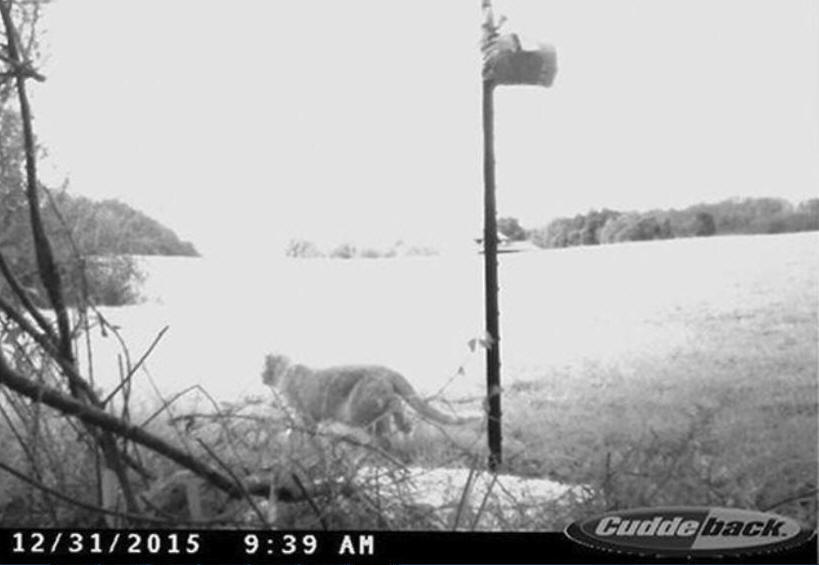TWRA: Loudon photo shows house cat,
not cougar

A trail camera's image of what appeared to be a large cat prowling near a deer feeding station in Loudon last week is not a panther, cougar or mountain lion, experts said.
After photos were published on social media, speculation suggested a mountain lion or cougar might on the loose.
Tennessee Wildlife Resources Agency Officer Matt Cameron and others disagreed, saying the creature in the photo is too small to be a cougar.
While confirmed western cougars might show up in East Tennessee someday as they move eastward, this is clearly not one of them, Cameron said.
"After observation by several biologists, we concur that given that the spacing of the bumps on the flat side of a (nearby) T-post is 2 inches, that this is without question a house cat," he said.
Tim Brewster set up the automatic camera about four months ago on his property. Since that time the camera has captured photos of deer, coyotes and other wildlife.
The animal captured on the camera last week looked like a cougar, especially the long tail and powerful hindquarters, Brewster said.
The presence of a cougar — also commonly known as the mountain lion, puma, panther or catamount — in Tennessee is not impossible. In October a trail camera in West Tennessee captured a photo that confirmed the presence of a cougar.
Biologists believe such sightings are of young male cougars leaving their home ranges in search of new territory. These males have been known to travel hundreds of miles.
States with breeding populations of western mountain lions are Nebraska, Wyoming, Colorado, North Dakota, South Dakota and Texas. There have been documented sightings of cougars in Missouri, Arkansas, Illinois, Kentucky, Connecticut and Kansas.
The U.S. Fish and Wildlife Service declared in 2011 that eastern cougars had been extinct since the 1930s. Until that report, eastern cougars were still listed as an endangered species.